In the beginning of the Book of Judges we read:
And the people of Israel again did what was evil in the sight of the Lord, and served the Ba′als and the Ash′taroth, the gods of Syria, the gods of Sidon, the gods of Moab, the gods of the Ammonites, and the gods of the Philistines; and they forsook the Lord, and did not serve him.
Judges 10:6
Who were these false gods and what attracted the Israelites to them?
Much of what we now know about them we learned from the ruins of Ugarit, an ancient port city on the coast of what is now Syria, North of Lebanon. Ugarit, often called Ras Shamra, was founded about 1900 BC, and flourished between 1450-1200 BC. Its ruins were discovered in 1928, and the discoveries included clay tablets with many stories of the gods of that time and area. (Ugarit, n.d.)
The gods
The first god we’ll consider is one that is mentioned most often in the Old Testament, Ba’al (pronounced BAH-al). He was said to be the son of the supreme Canaanite deity, El. (Hahn, 2009, 323) Like many of the gods we’ll discuss today, Ba’al was a fertility deity whose name meant “owner” or “lord”. Ba’al was believed to control the reproductive powers of nature and so was linked to sexual indulgence (Jastrow et al., n.d.). In Babylonia, he was called Bel, the god of thunderstorms. The plural form of Baal’s name, “Baalim”, referred to gods in general. (Baal | Definition, Myths, Worship, & Facts | Britannica, n.d.) In chapter 18 of the first book of Kings, we read the gripping story of Elijah facing down 450 prophets of Ba’al.
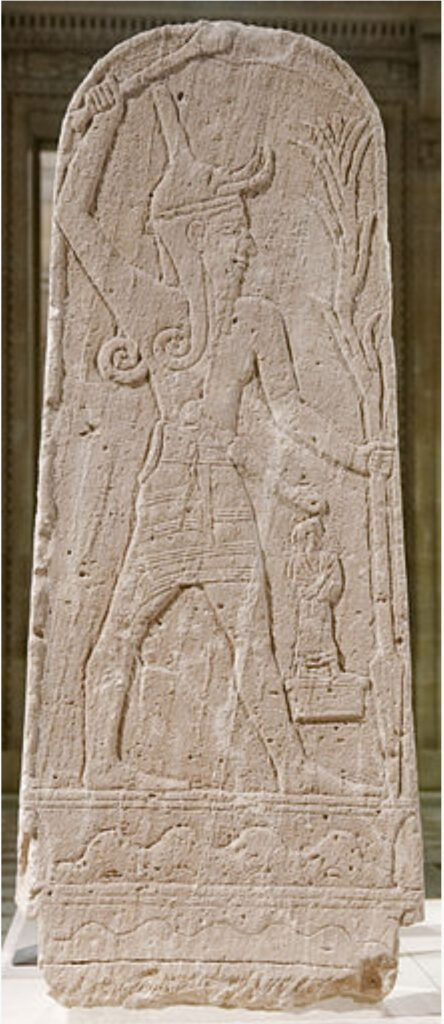
Ba’al was worshipped in different forms and under a variety of titles in different places. (McKenzie S.J., 1965, 72). Maybe you remember the demon “Beelzebul” mentioned by Jesus in the 11th chapter of St. Luke’s gospel. The name “Beelzebul” was most likely derived from the word Ba’al and another word meaning “prince”. In the first chapter of the second Book of Kings, the name of this god seems to have been deliberately and derisively distorted to Beelzebub (pronounced BAH-al-zeb-oob’) or “Ba’al of Flies”. (Strong’s Hebrew: 1176. בַּ֫עַל (Baal Zebub) — “Baal of Flies,” a Philistine God, n.d.)
In 1 Kings 15:11-13 we read of the good Israelite King Asa who removed an image of Asherah, (pronounced ash-ay-RAW) set up by his mother:
And Asa did what was right in the eyes of the LORD, as David his father had done. He put away the male cult prostitutes out of the land and removed all the idols that his fathers had made. He also removed Maacah his mother from being queen mother because she had made an abominable image for Asherah. And Asa cut down her image and burned it at the brook Kidron.
1 Kings 15:11-13
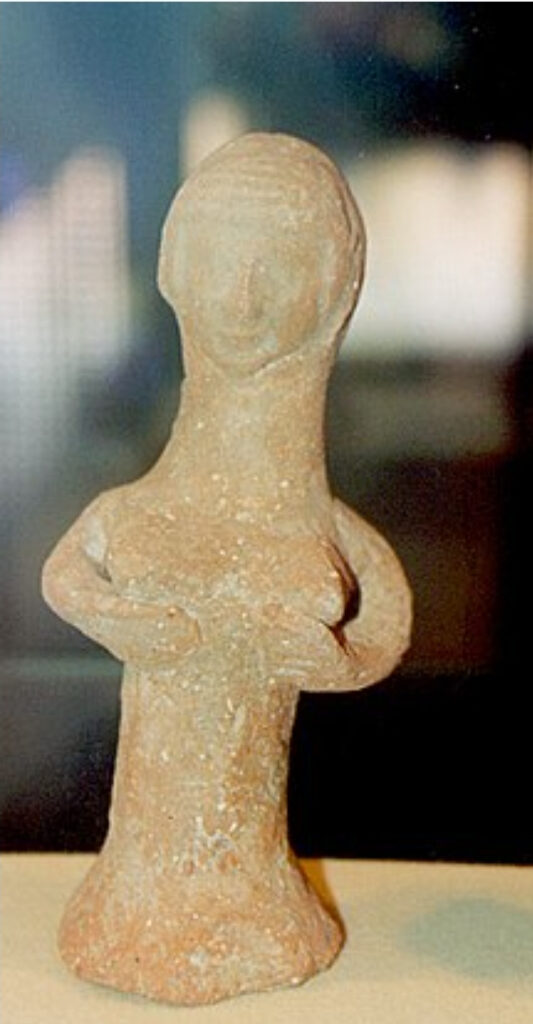
Asherah was said to be the wife of El (Durken & Hoppe, O.F.M., 2017, Location 24300) and was associated with sacred trees or carved wood poles. She was the goddess of happiness and good fortune (Strong’s Hebrew: 842. אֲשֵׁרָה (Asherah) — a Phoenician Goddess, Also an Image of the Same, n.d.)].
Ashtoreth (pronounced Ash-TOE-reth) was originally a Phonecian goddess and named Ishtar in Babylonia. She was the goddess of fertility and sexual love and a consort of Ba’al. (Mark et al., 2021) Her name in Hebrew is thought to have been derived from a conflation of her Canaanite name Astarte with the Hebrew word for shame, Bo-SETH (Hahn, 2009, 76) a sign of derision which prevented godly Israelites from having to say the actual name of a pagan deity out loud. (Astarte | Ancient Deity | Britannica, n.d.) The sacred authors of the Old Testament use the plural form of this name, Ashtoroth, to indicate the goddesses of Canaan in general. (Hahn, 2009, 76)
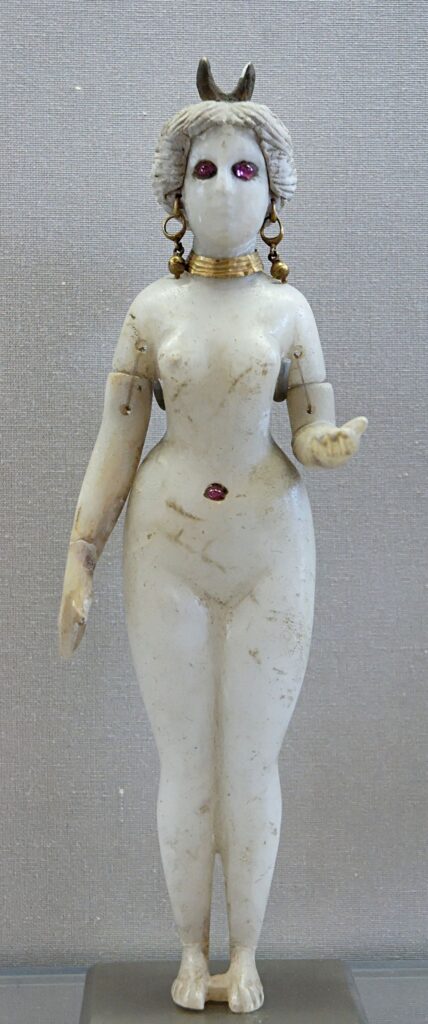
King Solomon, who as a young man asked God for an understanding heart, worshiped Ashtoreth as an old man. We read in the first book of Kings, chapter 11:
For when Solomon was old his wives turned away his heart after other gods, and his heart was not wholly true to the Lord his God, as was the heart of David his father. For Solomon went after Ashtoreth the goddess of the Sidonians, and after Milcom the abomination of the Ammonites.
1 Kings 11:4-5
In the seventh chapter of the Book of Jeremiah we read:
Do you not see what they are doing in the cities of Judah and in the streets of Jerusalem? The children gather wood, the fathers kindle fire, and the women knead dough, to make cakes for the queen of heaven; and they pour out drink offerings to other gods, to provoke me to anger.
Jer 7:17-18
The “Queen of Heaven” was a name given to Ashtoreth in Mesopotamia. The cakes offered to her were probably in the form of a nude woman. (Couturier C.S.C, 1990, 276)
The fertility rites associated with some of these gods included ritual prostitution, because we read in the book of Deuteronomy:
There shall be no cult prostitute of the daughters of Israel, neither shall there be a cult prostitute of the sons of Israel.
Deut. 23:17
Another god was Dagon (pronounced daw-GOHN) an agricultural god, that is, a god of crop fertility. He was worshipped by the Philistines (Judg 16:23; 1 Sam 5:2) (Hahn, 2009, 186). The worship of Dagon has been traced back to the 25th century BC in Mesopotamia. Some believe that the Hebrew word for “grain”, dagan (pronounced daw-GAWN’), was derived from the name of this god. (McKenzie S.J., 1965, 168)
In the Book of Judges, Samson brings the roof of the Temple of Dagon down upon 3000 Philistines. We read in the first book of Samuel that when the Philistines captured the Ark, they brought it to the temple of Dagon at Ashdod. This temple was destroyed by the Jewish hero Jonathan in Maccabean times (1 Mc 10:84).
Lastly, Molech was a god who was worshiped with child sacrifice, specifically by passing the children through fire. (Hahn, 2009, 624). Mosaic law specifically forbid this:
“Say to the people of Israel, Any one of the people of Israel or of the strangers who sojourn in Israel who gives any of his children to Molech shall surely be put to death. The people of the land shall stone him with stones.
Lev. 20:2
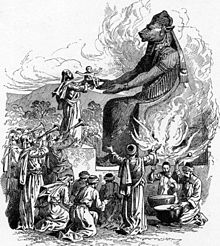
It is thought that Molech’s name in Hebrew derives from the word for king, “melech”, combined with the vowels of the Hebrew word for shame, “boseth”, in a manner similar to that of Ashtoreth, which we mentioned earlier. (McKenzie S.J., 1965, 583)
Even the wise King Solomon fell under the spell of Molech, as we see in the first Book of Kings:
Then Solomon built a high place for Chemosh the abomination of Moab, and for Molech the abomination of the Ammonites, on the mountain east of Jerusalem.
1 Kings 11:7
We read in the Book of Jeremiah:
They set up their abominations in the house that is called by my name, to defile it. They built the high places of Baal in the Valley of the Son of Hinnom, to offer up their sons and daughters to Molech, though I did not command them, nor did it enter into my mind, that they should do this abomination, to cause Judah to sin.
Jer. 32:34-35
These places were eventually dismantled by the upright King Josiah:
And he defiled Topheth, which is in the Valley of the Son of Hinnom, that no one might burn his son or his daughter as an offering to Molech.
2 Kings 23:10
We know the Valley of the Son of Hinnom by its more familiar name, Gehenna. (McKenzie S.J., 1965, 299)
What does this mean to us?
There are several reasons why the stories of Israel’s idolatrous infidelity should move us. First, we all have idols, that is, things that usurp the proper place of God in our lives. Second, we are like the idolatrous people of Israel and their pagan neighbors in several ways. We too are concerned about controlling the powers of nature to our benefit. We too are inclined to sexual indulgence free from any moral law. They sometimes offered their babies to Molech, while we kill our babies in the womb.
But we differ from the ancients in damning ways too. They at least had a notion of a transcendent divine power that controlled nature. We, on the other hand, are growing more atheistic as the years roll on, replacing the divine with ourselves. Israel and the pagans surrounding them prized fertility, notwithstanding the sacrifices to Molech. We, on the other hand, treat fertility like a disease. The Jewish Midrash asserts that the pagan priests played drums loudly to drown out the wails of the mothers and the screams of the babies while the babies sacrificed to Molech. (Avtzon, n.d.) In our culture, Hollywood celebrities and feminists celebrate the killing of the unborn.
There is no better time than now to repent of the idolatry in our own lives and in our society.
References
Astarte | ancient deity | Britannica. (n.d.). Encyclopedia Britannica. Retrieved March 19, 2022, from https://www.britannica.com/topic/Astarte-ancient-deity
Avtzon, L. (n.d.). The Tragic History of Molech Child Sacrifice – What Do You Think? – Parshah. Chabad.org. Retrieved March 19, 2022, from https://www.chabad.org/parshah/article_cdo/aid/4372130/jewish/The-Tragic-History-of-Molech-Child-Sacrifice.htm
Baal | Definition, Myths, Worship, & Facts | Britannica. (n.d.). Encyclopedia Britannica. Retrieved March 19, 2022, from https://www.britannica.com/topic/Baal-ancient-deity
Couturier C.S.C, G. P. (1990). The New Jerome Biblical Commentary (R. E. Brown, J. A. Fitzmyer, & R. E. Murphy, Eds.). Prentice-Hall.
Durken, D., & Hoppe, O.F.M., L. J. (2017). New Collegeville Bible Commentary: One Volume Edition (D. Durken, Ed.). Liturgical Press.
Hahn, S. (Ed.). (2009). Catholic Bible Dictionary. Crown Publishing Group.
Jastrow, M., McCurdy, F., & McDonald, D. B. (n.d.). BA’AL AND BA’AL-WORSHIP – JewishEncyclopedia.com. Jewish Encyclopedia. Retrieved March 19, 2022, from https://www.jewishencyclopedia.com/articles/2236-ba-al-and-ba-al-worship
Mark, J. J., Shukir, O., & Wilkinson, R. H. (2021, November 9). Astarte. World History Encyclopedia. Retrieved March 19, 2022, from https://www.worldhistory.org/astarte/
McKenzie S.J., J. L. (1965). Dictionary of the Bible. MacMillan Publishing Co., Inc.
Strong’s Hebrew: 1176. בַּ֫עַל (Baal Zebub) — “Baal of flies,” a Philistine god. (n.d.). Bible Hub. Retrieved March 20, 2022, from https://biblehub.com/hebrew/1176.htm
Strong’s Hebrew: 842. אֲשֵׁרָה (Asherah) — a Phoenician goddess, also an image of the same. (n.d.). Bible Hub. Retrieved March 19, 2022, from https://biblehub.com/hebrew/842.htm
Ugarit. (n.d.). New World Encyclopedia. Retrieved March 19, 2022, from https://www.newworldencyclopedia.org/entry/Ugarit
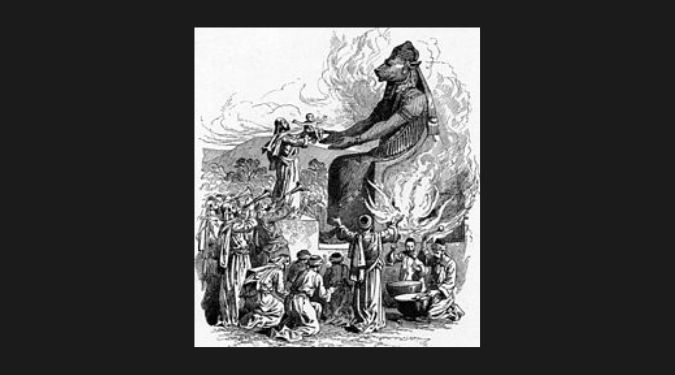
Great article. I enjoyed the history as well as the current similarity pointed out. Thank You